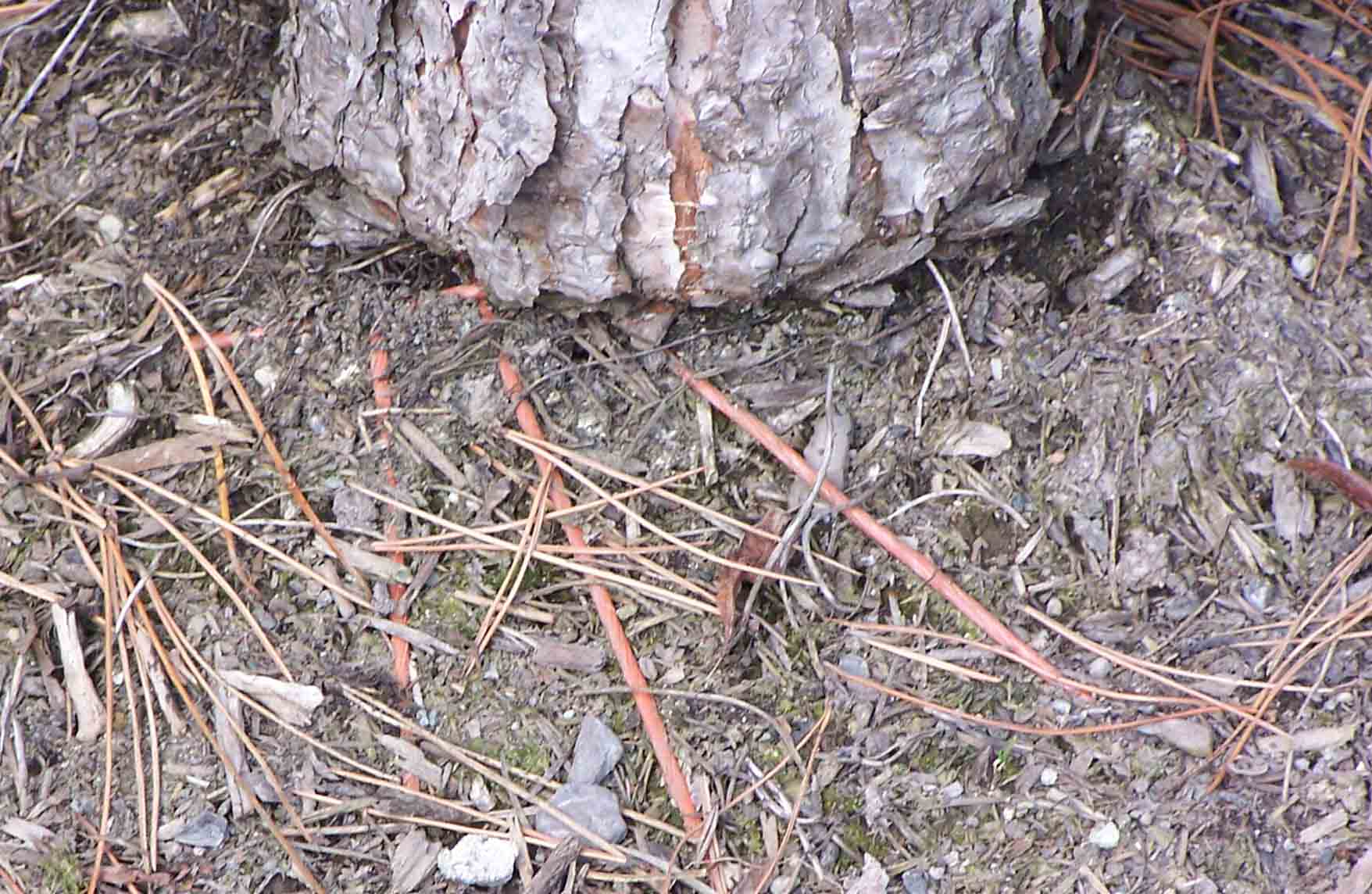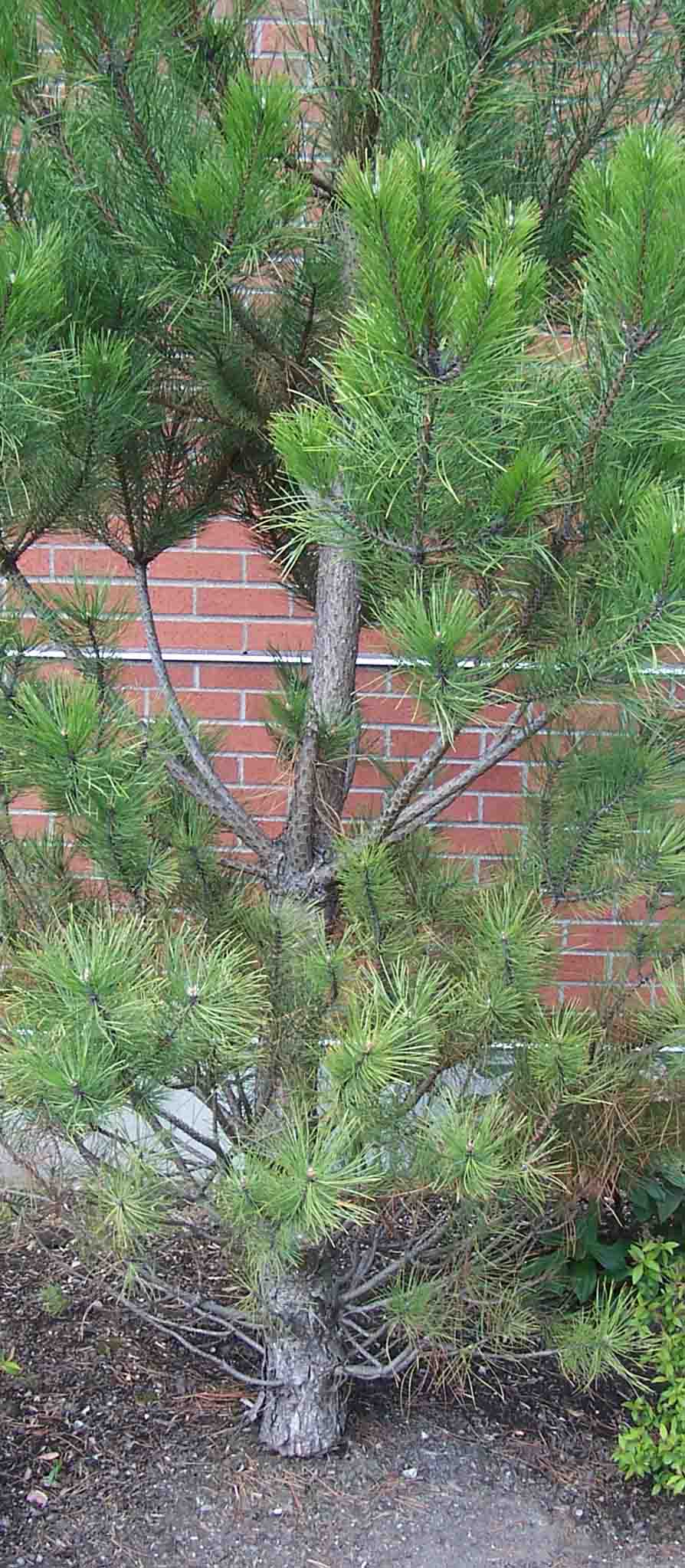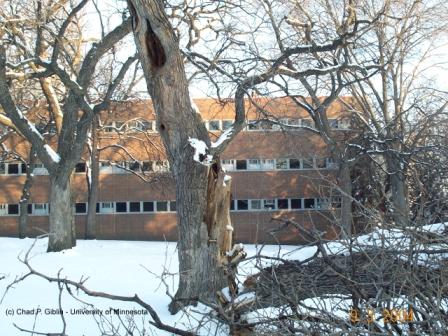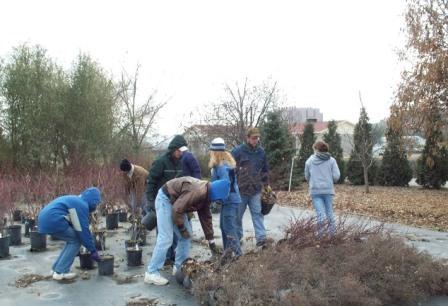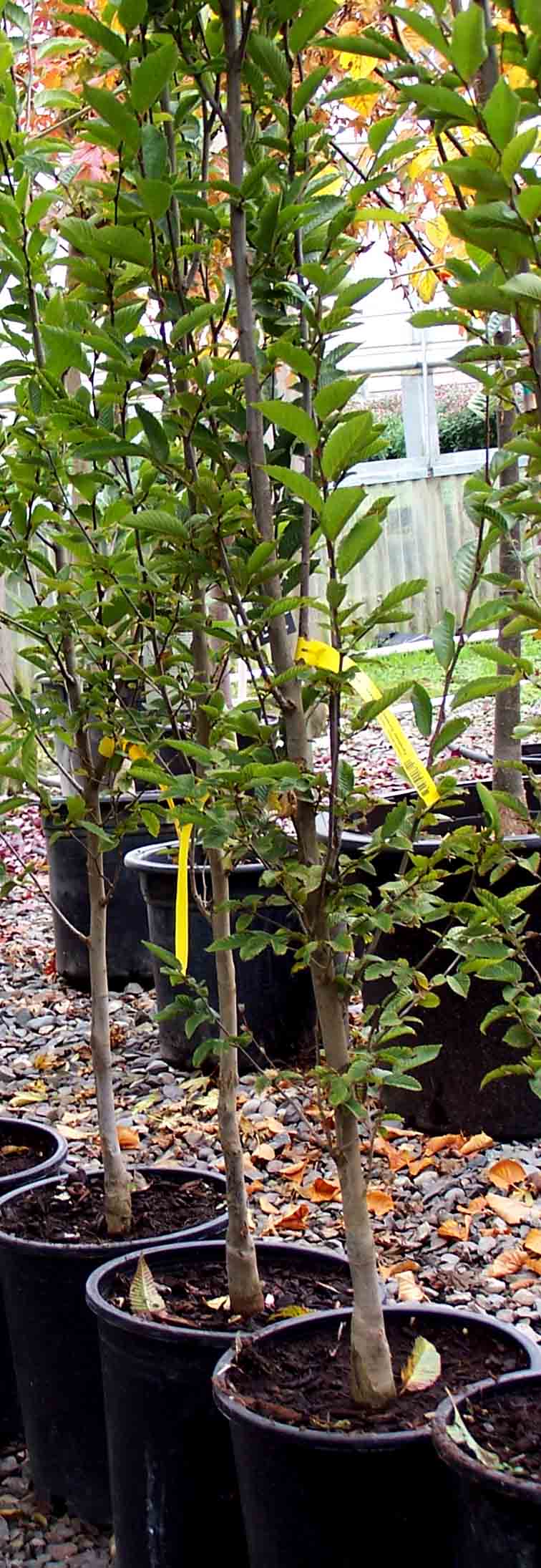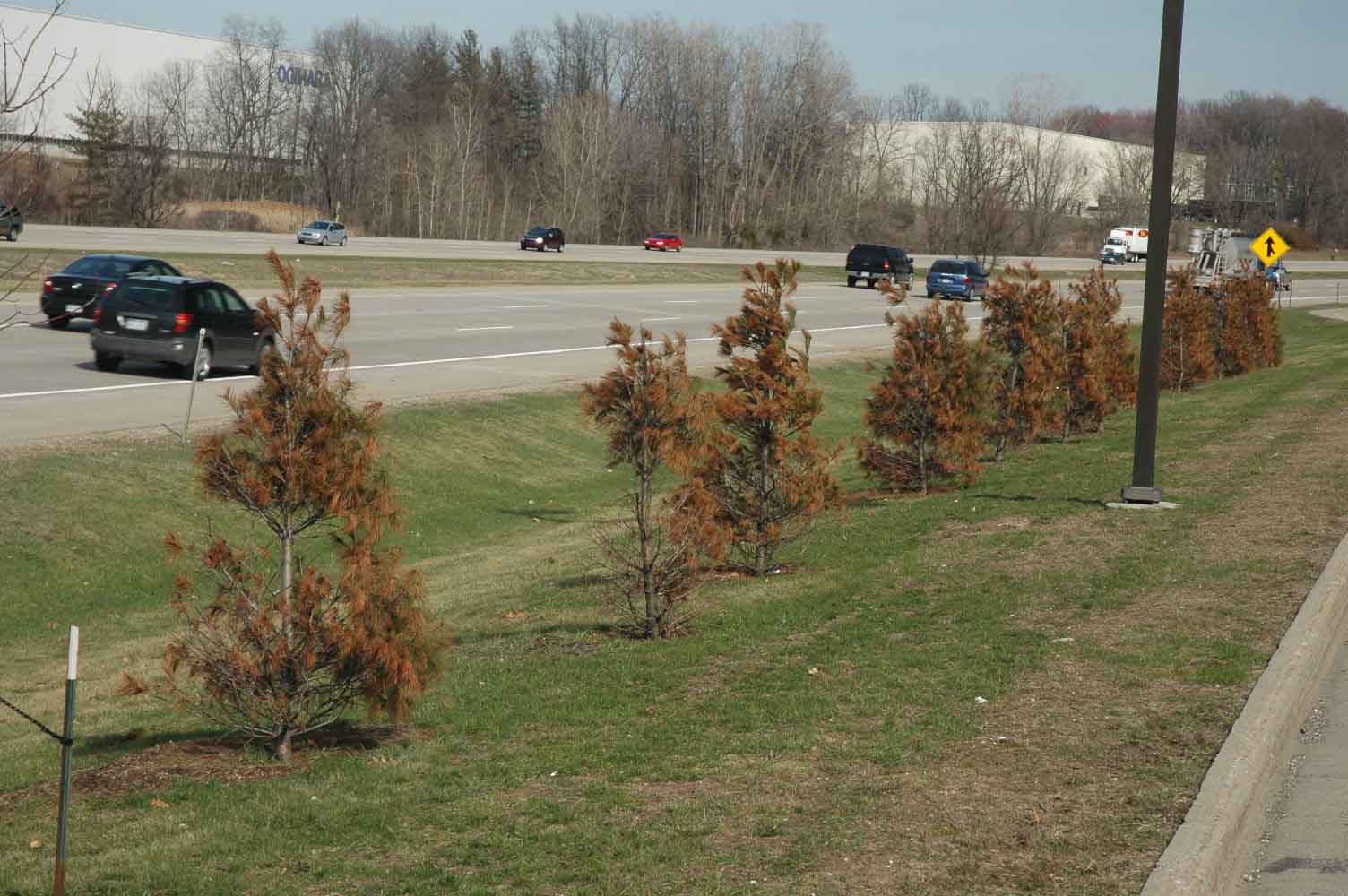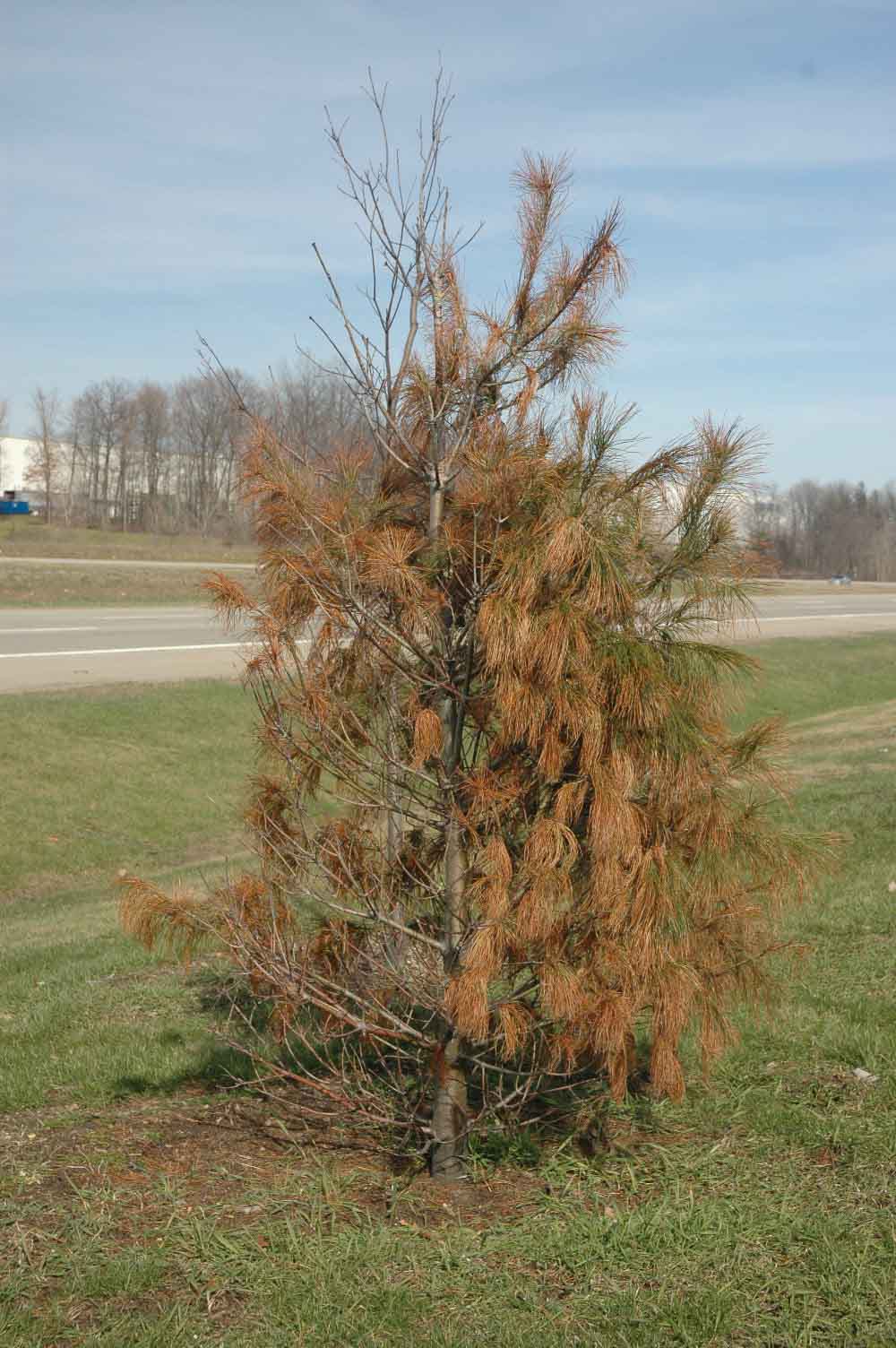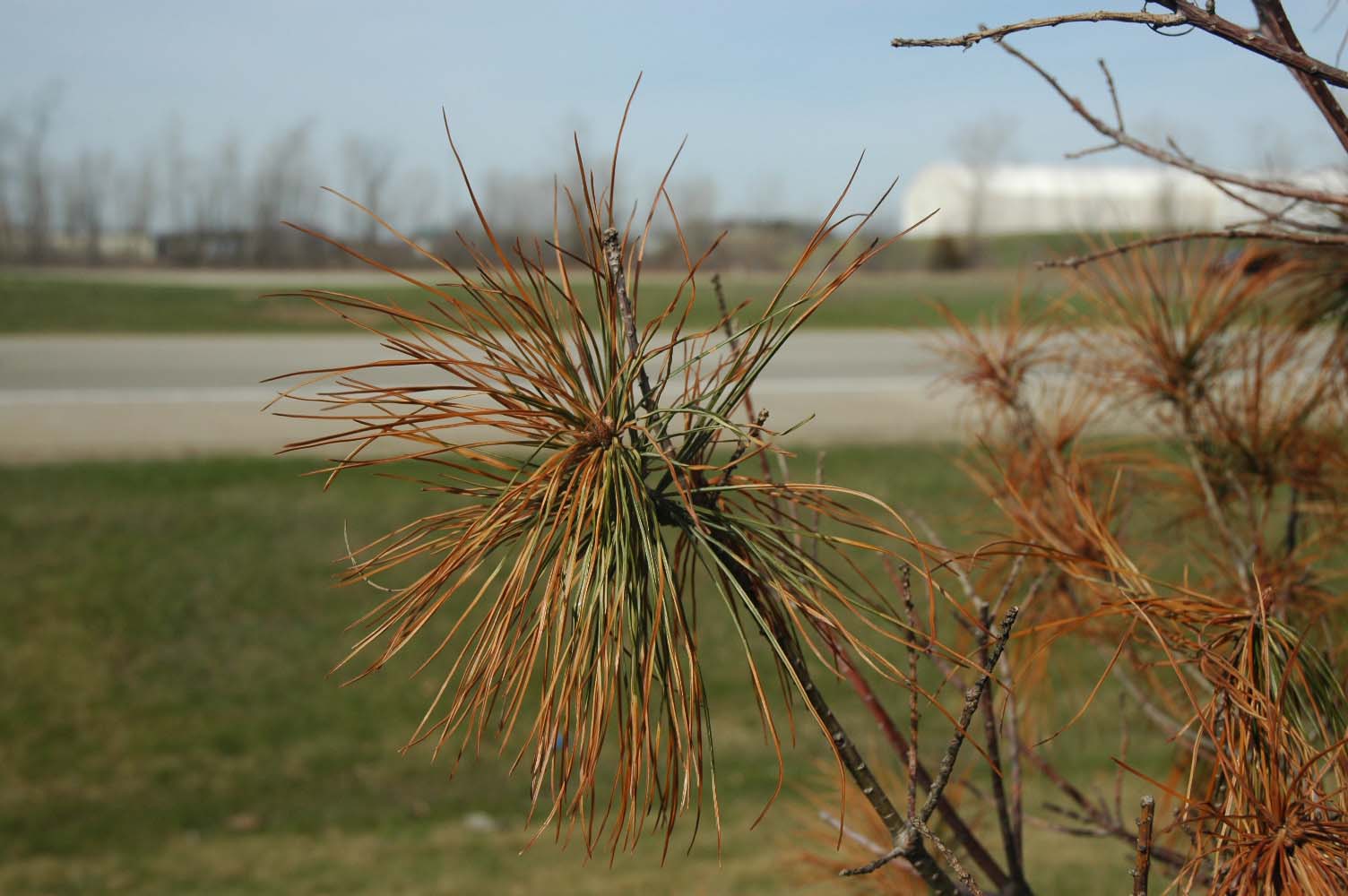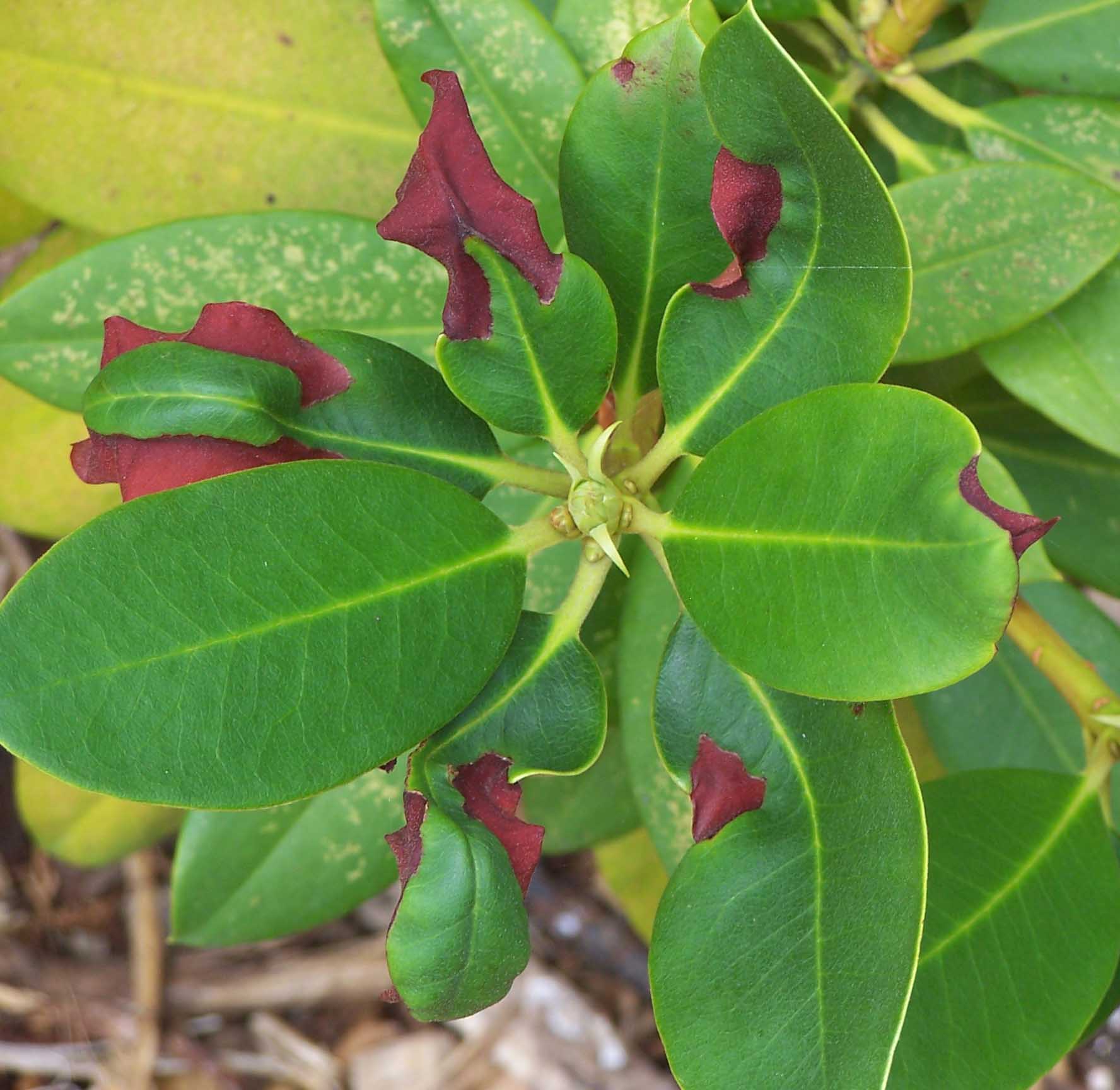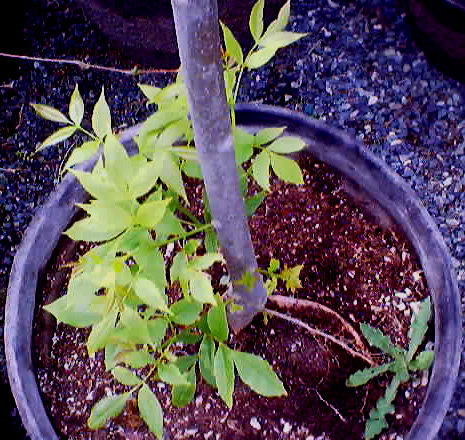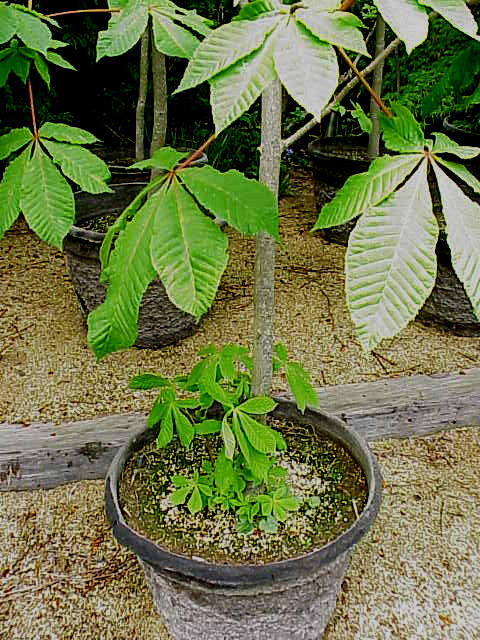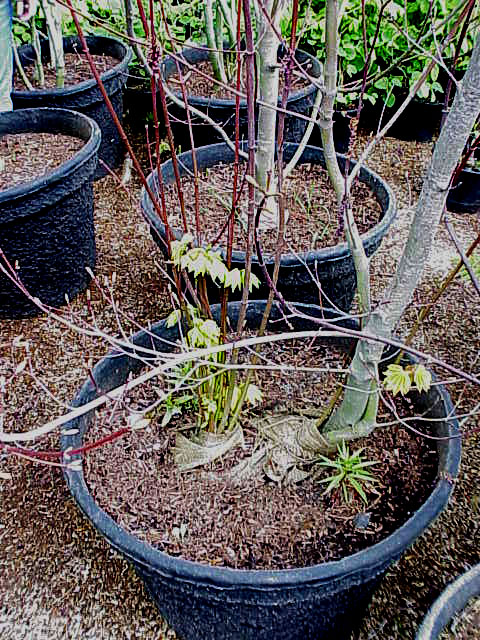
This winter, we’re working on renovating part of the campus Hort Garden. We’re tossing around lots of ideas/themes, but I’m leaning towards a garden full of “Plants with a Purpose”. Edible, fiber-producing, medicinal…you get my drift. Which brings me to today’s bloggerific topic: beverages.
Mankind has, throughout history, infused or fermented just about every species of flora in an effort to get either perked up or calmed down. These plant potions are often classified anthropologically as, ahem, “ceremonial beverages”. The species that we currently rely on for our daily ups and downs are not native to North America. But that’s not always been the case.
Way before the joys of coffee hit these shores, there was the Yaupon holly (and I am partial to hollies). This thicket-forming evergreen shrub likes “wet feet” and is usually found in marshy areas in the piedmont and coastal plains of the southeast. Translucent red berries grace the female plants in winter – hollies are dioecious, meaning male and female flowers reside on separate plants. The fact that Yaupon is one of few native plants to contain caffeine was picked up on very early by Native Americans – a potent tea brewed from the leaves was called the black drink. Though the scientific name Ilex vomitoria might indicate some unpleasant side effects, it only exhibits emetic properties when a ridiculous amount is consumed.
Sassafras (Sassafras albidum) has been used as both a flavoring and as the main ingredient in teas and soda. The sassafras is a sweet little understory tree, with oddly and variably shaped leaves – with one, two, or three lobes – Dr. Dirr at UGA pointed out to us that they often resemble “racoon mittens” Native throughout the Appalachians, the tree roots were dug up in early spring before while still loaded with sap (where’d ya think they got the name “root beer” from?!). Safrole is the phenolic compound that produces the characteristic flavor. However, safrole is now considered a carcinogen and the FDA banned the sale of sassafras for human consumption in 1976. Extracts used in food and beverages have to be “safrole free” – produced through a commercial process. It’s also a psychoactive compound. This may explain Yosemite Sam’s obsessive-compulsive tendencies and Saturday morning profanity (and I quote) “Rassan, sassan, sassafrasan…”.
Last in today’s line-up of stuff from the woods: Humulus lupulus (the vowel-heavy name for hops). Mmmmm, hops. Here ye, the one or two people that may not know this, that from hops cometh the essential oil that maketh beer yummy. Speaking of oils, get close enough to hop vines on a really warm day and you’ll get a whiff of why it’s in the family Cannabaceae. This perennial vine is native to most of the Northern Hemisphere. The European beer-making strains have naturalized – that is, has spread from plants brought over by colonists in the mid 1600’s. Hops are also dioecious – the female flowers are papery cones about the size of a quarter and the source of all hoppiness (the male flowers are basically useless and just sit around with their feet on the coffee table). The leaves are sandpapery and most have three lobes – sort of reminiscent of a grape leaf. Not only useful to make ceremonial beverages, the vigorous leafy vines provide an excellent screen and can quickly cover up an unsightly fence, shed, or family member. Now that’s a useful plant!
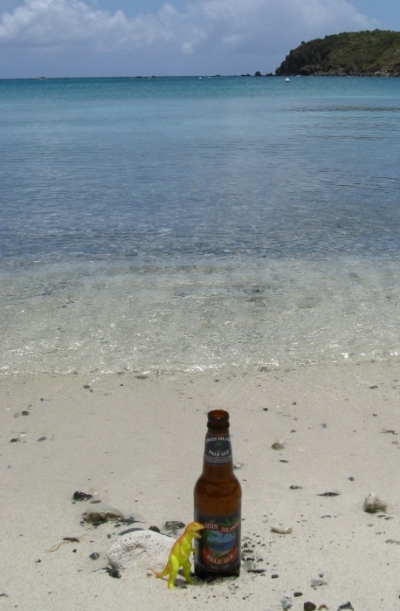
I spent so much time writing this I ran out of time to hunt for plant photos. So here you go: My traveling T.Rex enjoys a nice, hoppy Virgin Islands Pale Ale on a lovely beach in St. John.

